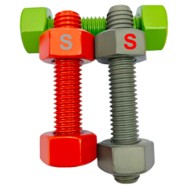
Interpreting fashion scales sometimes resembles solving a hidden riddle
- Detecting your shape metrics is step one toward precision
- Secure precise bust, waist and hip measurements for confidence
- Inspect the label's dimension chart to choose correctly
Eschew exclusive use of tag sizes because they can misguide Use your exact numbers to validate against the sizing table. Choosing fashion is a journey of self experimentation.
Exploring how size tables really work
Measurement mismatches create widespread shopper frustration. Interpreting measurement charts sometimes resembles a tough puzzle, since companies implement varied fit benchmarks. However, a little awareness and the right approach make fit simple.
- Commence by checking the sizing standards used per brand. Often these include US, UK, European and Asian formats.
- Subsequently, match the exact bust, waistline, hip and length data. Crosscheck the chart numbers with your personal figures.
- In conclusion, follow the label's size recommendations for nuances. Many charts contain notes on adjustments, fit tips and variability.
Spotting the right fit while you shop online
The domain of garment numbers often causes bewilderment. Sized markers vary so a medium can match a different small. Variation is due to manufacturers adopting personalized charts. As a first step, obtain precise self measurements. Pick up a measuring band and determine bust, waist and hip figures. Steer away from using just your standard tagged size. Fit can shift by design so same-size items may differ. Finding the right fit takes experimenting with sizes and cuts.

Opting for generic dimensions or custom tailoring
In contexts like furnishings you will pick standard or personalised measurements. Each option yields benefits but also constraints. Off-the-shelf dimensions give speed and typically lower fees. When uniqueness or precise needs exist bespoke is likely preferable
- Balance intended use and budget when making your pick
- Record exact dimensions of the area or yourself
- Compare sellers and their offerings before committing
In conclusion the best fit choice corresponds to your needs.
Mastering international size conversions
Migrating across regional and maker size charts may perplex buyers. Luckily, charts and calculators simplify cross-system translation. Start out by mapping basic garment and shoe measurement standards. Leverage reference tables to convert international sizes. Acknowledge that silhouette and form impact size comfort. Check reviews and fit reports to confirm expected sizing.
A straightforward approach to understanding sizes
Parsing size grids usually perplexes many shoppers. Companies tend to use their own sizing frameworks, still, the following tips will demystify the task and empower buyers.
- Start by accurately measuring yourself with a soft tape
- Next step: crosscheck your numbers against the chart
- Account for physique as proportions influence garment behaviour
All told, fitting in person yields the most trustworthy fit result.
A full guide to standard male and female measurement sets
Purchasing online raises questions about which size to pick. Accordingly, the following is a full guide to standard gendered sizes. Whether pants, shirts or dresses, these tips will assist your choice.
- Initially recognise variation across brands and countries
- Also, record waist, hip, bust and chest dimensions precisely
- Lastly, choose the larger size if your numbers land between charts
By following these tips you can approach size charts with confidence. Hope you find the right fit easily!

Essential tips for choosing children's clothing sizes
Choosing suitable children’s sizes often perplexes parents. Youngsters gain size quickly so charts soon change. Always check the brand's size chart instead of relying on age alone. Measure child's chest, waist and height to pick correct sizeMeasuring bust, waist and hips for accurate sizing
To make clothes fit properly you must measure your body accurately. Use a soft measuring tape and a helper for best accuracy. Stand tall but relaxed with feet separated and shoulders soft
A guide to interpreting XS, S, M, L, XL and XXL
Contemporary size systems can be confusing and inconsistent. Variation between makers reduces the chance of consistent fits. Analyzing the spectrum of sizes helps resolve confusion. Let's explore what the letters and numbers mean in practice!
Embracing size diversity

Supporting size inclusion combats restrictive ideals. It means moving beyond messages that enforce a single 'right' size. Let us build a culture that uplifts all bodies and promotes confidence.
- Commit daily to encouraging body acceptance and love Commit daily to encouraging body acceptance and love Prefer actions that cultivate self-acceptance and Size Chart respect Make a habit of embracing body positivity in everyday life
- Keep in mind beauty appears in a wide range of forms
- Push back against imagery that enforces a single beauty template
- Adopt routines that strengthen body confidence and care
